Note from Editor Shelly: It’s pronounced like The Guy with The Ark.
The World Cup 2018 has wrapped up as I’m putting this series together. The soccer contest reminds me of a time that Disney almost cornered the market on sports video games. Let’s go back in time and see how it all went down.
At the start of the millennium the Disney Company was at a crossroads. They were doing well in just about every aspect of the entertainment industry: theme parks, consumer goods, films, television and music divisions all seemed to be thriving. Everything went well for the studio except for video games. No classic movie or popular character seemed capable of selling a video game. You couldn’t begin to guess how many times the company tried.
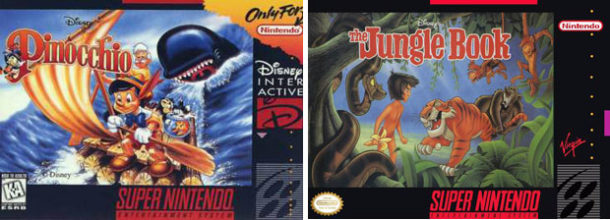
Disney Interactive, the in-house developer and publisher for the company, could not seem to create a hit game. The gaming public (and studio execs) were wondering what was going wrong. Other publishers seemed capable of releasing hit after hit with little effort. Disney shareholders wondered if they should be investing more into game development or abandon it altogether. The video game industry was pulling in almost $8 billion US in 2000. This was important because gaming had edged out movies as the top grossing form of entertainment that same year. By the end of the decade, movie tickets would grow an additional $3 billion but video games would more than double to $19 billion. Video gaming was expected to become the biggest form of entertainment for the next generation.
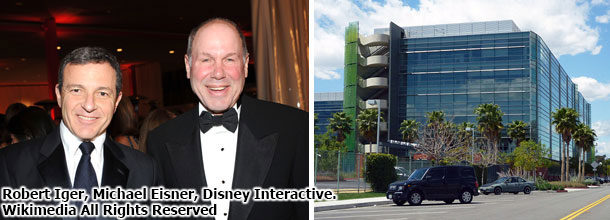
Disney wanted to capture a slice of the pie but they did not seem to know how. Shareholders received little insight from management. There were no reveals from the outgoing president Michael Eisner or the incoming president Robert Iger on what road they would take to become major players in the gaming market. Despite the lack of leadership in the USA, there were Japanese publishers that were eager to help put Disney on the map. One studio in particular, Square Enix, had a record of making games with tremendous substance. The title they created was called Kingdom Hearts, now well-known by even non-gaming and non-Disney fans. This was the challenge for the studios on both sides of the Pacific: Disney Interactive and Square Enix had to have a game ready by early 2000. This meant that planning, production and, of course, licensing rights had to be negotiated and approved well in advance. There was a rush for this game because the biggest console manufacturer of the time, Nintendo, was about to debut the GameCube. They needed the support of their partners in order to ensure their new platform got off to a running start.
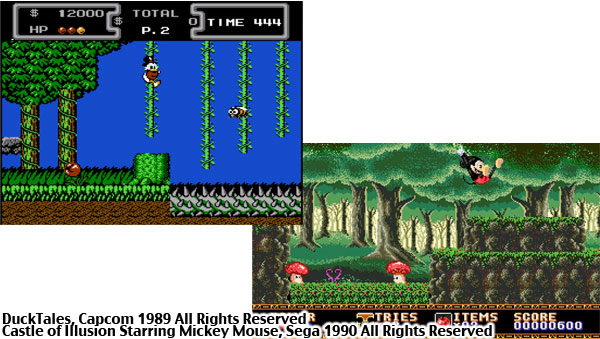
The most successful publishers and longest-lasting franchises made their debut with the launch of each new gaming platform. The Mario Bros., The Legend of Zelda, Metroid and various other titles became household names when the Nintendo Entertainment System (NES) debuted in North America in 1985. Third-party publishers that released a NES game of merit, such as Bionic Commando by Capcom or Castlevania by Konami also reaped the rewards of being among the first developers to support the platform. Some of the franchises that debuted 30 years ago are still being published today. The second round of consoles, the 16-bit generation, made their debut at the start of the 1990’s. That group was highlighted by The Super Nintendo, the SEGA Genesis and the NEC Turbografix-16.
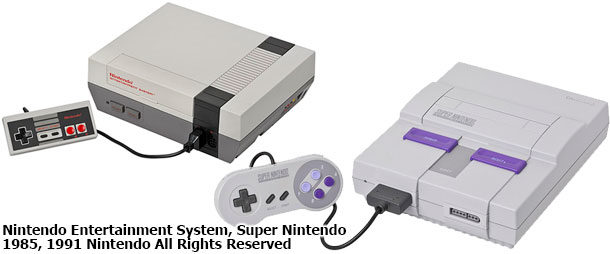
Again the biggest publishers were tapped to have games ready when each console came out. Alliances – in the form of exclusive titles – were formed between the various companies. Disney did not have much success developing their own hits during the 8-bit and 16-bit era. Other studios, like SEGA and Capcom, were able to license Disney characters and shows in their respective hits Mickey Mouse in the Castle of Illusion and DuckTales. Disney Interactive released above-average versions of movie-based-games but had not yet created a popular AAA title.
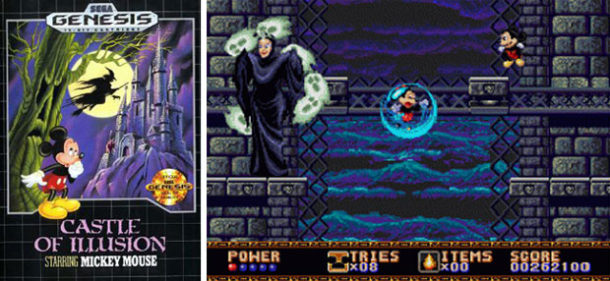
Audiences did not expect Disney to contribute much to the market. Within a decade, the console wars saw the death of SEGA and the rise of Sony and Microsoft as hardware manufacturers. All the while, Disney was an outsider looking in. They had a massive library of characters to work with but no idea on how to make a successful franchise game out of them. With the ’90s winding down there was a new round of consoles ready to make an entrance. Sony’s Playstation 2 was scheduled for release in 2000 and the Microsoft Xbox would debut in 2001. Nintendo’s next console, the Gamecube, would also come out in 2001. This was when Square-Enix stepped in to work with Disney and step away from the Nintendo family for a few years.
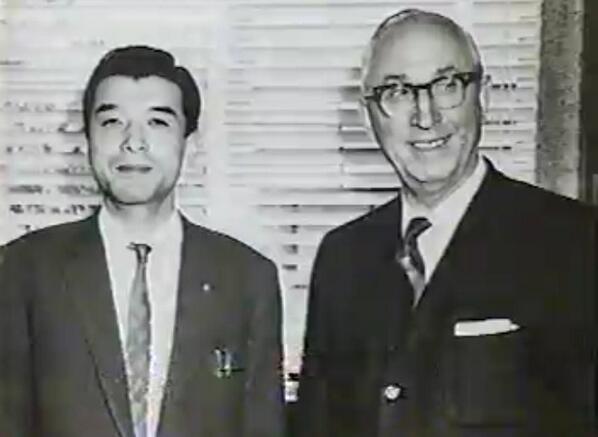
The Nintendo brand was well known in Japan and would become world renown in the last 30+ years. They actually had a relationship with the Disney company that extended back to 1959. At this time the Walt Disney Studios were working on live action films and television shows. Construction had just started on the Matterhorn Bobsleds at Disneyland and the Monorail would begin operations at that time.
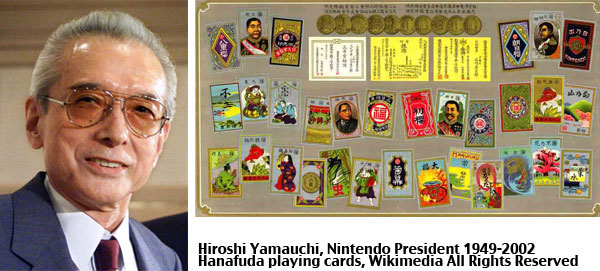
Just a few years into his 53-year tenure the incoming Nintendo president Hiroshi Yamauchi, the grandson of the previous president, met with Walt and Roy Disney. There was plenty on Walt’s plate but he made sure to meet with potential business partners. He had to be assured that new licenses aligned with his vision. Nintendo wanted to feature Mickey Mouse on the American style plastic playing cards. Post WWII, the Japanese were slowly integrating Western culture; there was a lot of push back from traditionalists, but Mickey was seen as a goodwill ambassador. The Nintendo company originally started off creating hanafuda (traditional Japanese) card games in 1889. The name Nintendo was derived from a phrase meaning leave luck to god/the heavens, a useful phrase when playing card games.
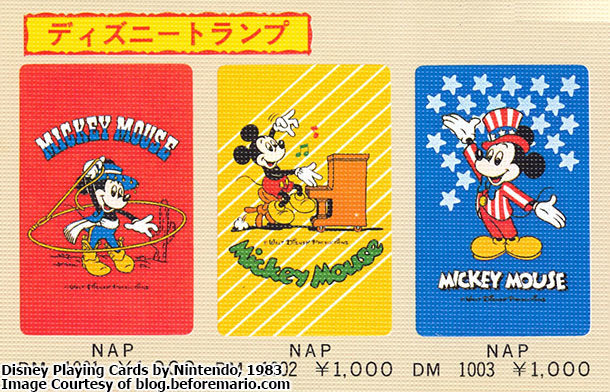
While visiting a US manufacturer, Mr. Yamauchi saw that playing cards was a limited market. As with the Walt Disney Company, there was value in diversifying. Mr. Yamauchi had a sense for where he could steer the company. Nintendo would eventually branch out into plastic toys, electronic toys and video games under his direction. He knew how to pick and choose his best employees for certain projects, and to keep things tightly under wraps. He had a strong insight for the market, not unlike Walt Disney or Steve Jobs. He took Nintendo public and served as the chairman for most of his life.

Needless to say, the company grew quite large under his leadership. The studio earned a great reputation among several generations of Japanese consumers. Tokyo Disneyland opened in 1983, the same year that the Famicom (the Japanese NES) appeared. Both companies were seen as family friendly, and both worked hard to make new fans. Nintendo and Disney were two names that went great together and Square Enix knew this. They needed to find the perfect project on which to collaborate. The announcement of a new console was the opening they needed.

Square didn’t start out as a big company. Like the early days of Nintendo, they had to learn what audiences wanted with each release. The games that they had published on the Famicom in the early ’80s had been of string of slightly memorable games. Nothing they created stood out from their contemporaries. Square was close to folding and the studio assumed that a title from 1987 would be their final game, thus they labeled it Final Fantasy. The title became a hit. It not only kept the company afloat, it allowed them to grow as developers. The success of the game also ensured that Square would be aligned with Nintendo for years to come. The NES appeared in North America in 1985 and several of the early Japanese hits were localized for American audiences. Final Fantasy was one of those titles. Square and Nintendo stayed together for more than a decade as their hits were released on both sides of the Pacific. Final Fantasy VI (released as Final Fantasy III in the USA) for the Super Nintendo was considered one of the greatest role playing games of all time. It was a game with incredible depth, a wonderful cast of characters and an entertaining story. It was released at the end of the 16-bit era and considered a crown jewel for the Super Nintendo. Square had some ambitious plans for their follow-up title but they did not think that Nintendo would have the right platform for them.

The large studios were always on the hunt for the next technological breakthrough. In the ’90s the majority of publishers, except for Nintendo, left cartridges behind in favor of CD and DVD media. Game developers suddenly found themselves with an abundance of storage for their games. Square would jump ship and work with the upstart Sony on their new console. It was a gamble that worked very well for the publisher. Final Fantasy VII would take advantage of the next generation of storage space and processing power. The game was a prime example of the changing landscape. It featured a 3D engine, full stereo soundtrack and 3D animated cut scenes that gave audiences a cinematic experience. This was something impossible to create on Nintendo’s cartridge based systems, specifically the N64, the successor to the Super Nintendo. People that did not gravitate to the role-playing genre suddenly found themselves entranced by this new form of storytelling.

Millions of new fans were brought on board. Sony’s Playstation console became a mainstream success in part because of what Square offered. Final Fantasy VII was credited with being one of the most important console titles of all time. What Square was lacking was a connection to a broader audience, specifically the people that were not into gaming. There were untold millions that had never heard of Square and were not really familiar with their library of characters. Final Fantasy VII did a great job of reaching many of those people, but Square wasn’t going to settle on one series. They wanted to reach a broader base and become industry juggernauts. Mickey Mouse and his friends were the icons that Square needed. Square was eager to start a partnership that would be mutually beneficial and financially rewarding for both companies. When they learned that the N64 successor, the Nintendo GameCube, was going to be disk-based, it made the decision to return to them much easier. Square would continue to release franchise titles on other machines but building a series for a new console ensured they got off to the right start.

There was a challenge that the companies needed to address first. Square had a distinctly Japanese aesthetic to their games. The art featured in previous Square titles had a strong animé look to them. There was a reason for this, freelance artist Yoshitaka Amano was closely identified with the company. His concept pieces were light and fluid. His designs looked unlike anything created in the USA. Mr. Amano had gained notoriety working on the Speed Racer animated series as well as Science Ninja Team Gatchaman (Battle of the Planets), two of the earliest shows to be translated for western TV. Neither of those shows reflected the Disney “look.” Western audiences might be turned off by the Japanese style so they needed to adapt. The studio looked to a young designer named Tetsuya Nomura to help with a game they called Kingdom Hearts.

Nomura had worked on the character designs in Final Fantasy VII and had also created the character designs for Square’s debut Playstation 2 brawling game called The Bouncer. Nomura’s characters were very unique, they were not quite Japanese anime, nor quite Western cartoon but instead something in between. The lead character in The Bouncer, Sion Barzahd had a fresh look. Until then most brawling games featured karate masters or body-builder type characters but Sion looked different. His look could be described as adventure punk. He was young and athletic, and didn’t wear a martial arts uniform but instead a flashy leather jacket, shorts and boots; Something that you might catch a trendy punk rocker wearing.

Nomura was tapped to design a lead character that would fit into a Disney game but reflected the Square universe. His new character was called Sora and he appeared to be a younger version of Sion, including the hair, colors, accessories and even his costume. His soft features, large eyes, and over-sized hands and feet were cartoonish in proportion. Originally he was designed with lion features, including cat ears and a tail, but these were quickly dropped. Sora didn’t look like a live-action person trying to interact with 2D characters but instead a young cartoon character himself. He would fit right into the Disney lineup. Yet that was only the first challenge the company faced. Sora, like Sion, would be accompanied by two more experienced fighters. These came in the form of Donald Duck and Goofy.

The Disney company was very protective of their IP. It was one thing to get permission for a character or two but Square wanted to feature dozens of characters from different animated films. They wanted freedom to have Sora and his traveling companions, Donald Duck and Goofy, to be able to interact with other worlds. The legal wrangling and contract stipulations were pretty serious. Disney had to sign off on any character designs and costumes. They were very specific about what characters could say, who could appear in certain portions and even for how long.

Square wanted to maintain the integrity of each world so they created multiple versions of the trio. For example if the characters visited Atlantica, a game version of King Triton’s domain from the Little Mermaid, they would become mer-people. Sora had a mermaid tail, Donald had octopus tentacles and Goofy was part turtle. If the group visited the Steamboat Willie universe then they all had pie-eyes and were colored in black and white. These rules applied to every game and world the heroes traveled to. Visiting the Grid from Tron meant that the crossover characters would get illuminated jumpsuits that matched the design from the film.

Disney Interactive was called upon to help during the development of Kingdom Hearts. A decade earlier they were floundering but now they were redefining the characters for the new media. As any fan of Kingdom Hearts could tell you they did an admirable job at capturing the personality of each character. Disney Interactive, and the Disney Archives shared resources and materials with Square in order to create an authentic “Disney” experience. Working together the developers brought the icons to life for a new generation of audiences.
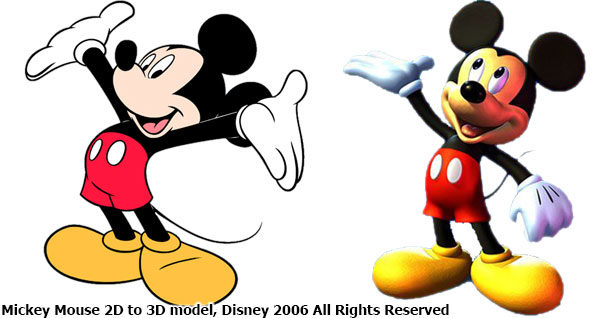
Think about the historical importance of this; some of Disney’s first 3D characters were created by the gaming branch of the company and not by the animation wing. Walt Disney Animation Studios was winding down production of 2D features and would begin laying off artists in 2002. They would begin the shift to 3D animation around 2003. Disney’s fully CGI television show Mickey Mouse Clubhouse and their first CGI feature Chicken Little would debut in 2005, many years after Kingdom Hearts was already out. The developers had to figure out how to make their 3D models look and move like their 2D counterparts. This was no easy task. Getting a CGI model to squash and stretch, or even walk like a cartoon character had been a challenge even for Pixar. Square had solved these problems early on. But if the game were going to succeed, then it had to be more than just visually accurate.
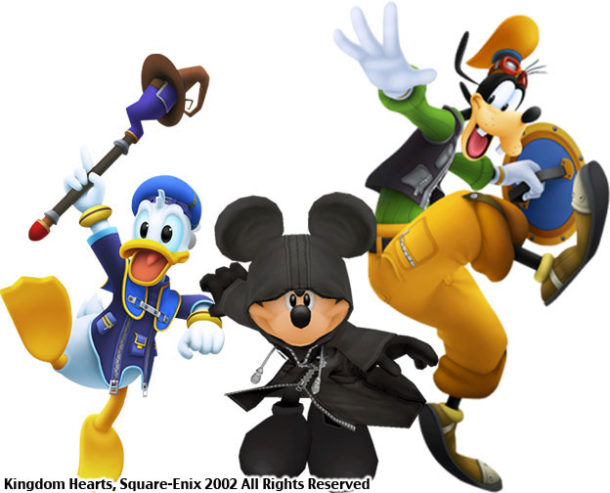
Disney was betting big on the franchise. Many US voice actors all revisited their roles including the late Wayne Allwine as Mickey Mouse, Tony Anselmo as Donald Duck and Bill Farmer as Goofy. In Japan the official Japanese voice actors did the work and they sounded very similar to their US counterparts. As the series grew and became more popular then more actors were brought on board. Jodi Benson revisited her role as Ariel, Bruce Boxleitner as Tron, Gilbert Gottfried as Iago, Paige O’Hara as Belle, Ming-Na Wen as Mulan and even James Earl Jones as Mufasa. These were only a sample of dozens and dozens of returning legends that appeared over the various Kingdom Hearts sequels. The layering of visual and audio details helped immerse audiences into the different Disney and Square worlds.
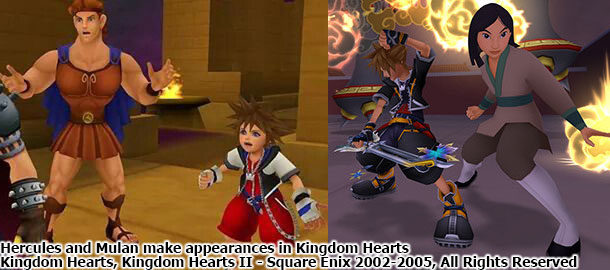
The game preserved the elements that made the various films popular in the first place. The stages were more than colorful backgrounds in the game. Audiences could actually explore Agrabah from Aladdin, Halloween Town from the Nightmare Before Christmas and the Hundred Acre Wood from Winnie the Pooh, in essence giving audiences a virtual Disneyland made up of living movie sets. No single Disney game before had offered that much exploration. At each turn the team at Square respected the source material and did not try to do anything that would break the consistency of each story. Each world was treated as its own set piece. In this way they could reach an agreement with Disney. For example, Winnie the Pooh would not get to ride a light cycle or throw glowing disks; Ariel would not be able to take Mr. Toad out for a drive. In addition to locations, Square had to adhere to a list of acceptable things each character could or could not do. This was nowhere more apparent than with Mickey Mouse.
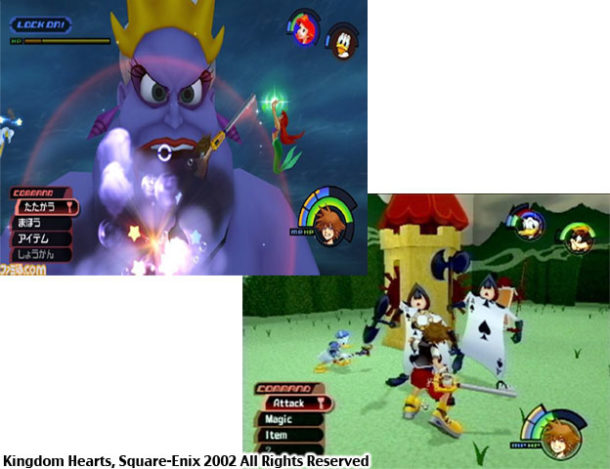
Mickey Mouse was and would always remain the most important asset in the Disney library. Game studios couldn’t just ask for the rights to put him in any story they wanted. There were certain things that would be out of place for the character. Imagine if a developer pitched a version of Mickey that smoked cigars and used a shotgun a la Duke Nukem. Those developers would get thrown right out of the Disney campus! The stipulations were decided as the game developers worked on a script. Disney Interactive failed to make a memorable game with any of the characters during the late ‘80s and most of the ‘90s, but the Japanese studios had a better track record. This should have eased any reservations the Disney licensing team had, but even then, they seemed reluctant to allow The Mouse to appear in the original Kingdom Hearts. Perhaps they were afraid that audiences might not like the inclusion. Any bad press might hurt the reputation of the company and their beloved symbol.
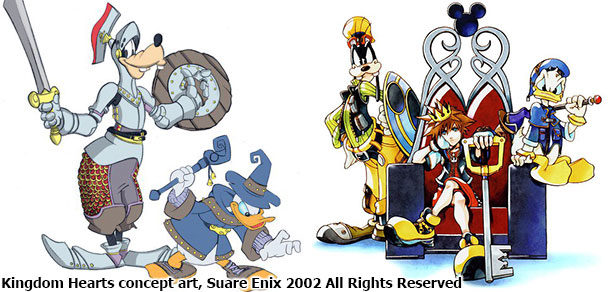
Goofy and Donald were more flexible to work with. The duo were given entirely new costumes for the game, more fantasy in appearance. Their new look worked within the context of the story. Their core personality was consistent with their cartoon origins. The two had far more lines and appearances than any other character, demonstrating their versatility. Mickey showed up in the game, but in a very reduced role.
He appeared at the very end, in a cut scene when things seemed at their worst. He didn’t have a new costume like Donald and Goofy. He was in his familiar red shorts and yellow shoes, except in the game he was holding a golden keyblade. This was a magical sword shaped like a key. It was the weapon used by Sora. The character was addressed as King Mickey. He said about two dozen words and assured his friends that everything would turn out okay. He got sealed behind some magical doors, keeping the villains at bay. Audiences thought that he had sacrificed himself to save his friends and his kingdom.
It was a powerful moment despite its brevity. Mickey was as cheerful and selfless as audiences expected him to be. At no point did he fight or perform anything that could be inferred as a violent act. It was the best outcome that fans and Disney’s licensing group could have hoped for.
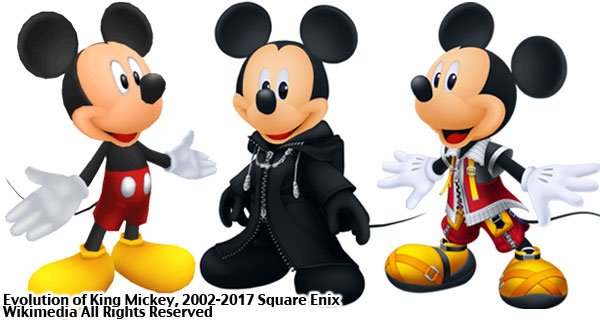
Kingdom Hearts debuted two years after the Playstation 2 launched. It had fantastic reviews and tremendous word of mouth. It sold millions of copies and created fans the world over. Square had now produced a smash hit in three separate decades for three different consoles. Kingdom Hearts did for Disney and Sony what Final Fantasy VII had done for role playing games and the original Playstation. It brought in non-gamers and made even veteran players interested in a new format. The general public could enjoy it without having any experience with action titles or role playing games. The series maintained an ease of use for new players and a degree of difficulty for more advanced gamers. This groundbreaking success had eluded Disney Interactive, and the Disney management team for decades. Now they had a template to learn from and build on.

Square (later on Square Enix) helped establish the Playstation 2 as a solid console. This was two years after the one year after the Xbox had debuted. They would eventually create a Nintendo portable version of the series for the GameBoy Advance with the game Kingdom Hearts: Chain of Memories in 2004. Because of their phenomenal success the designers at Square Enix found themselves with a lot more creative freedom. Disney now trusted the decisions of the studio with regards to their library, especially with Mickey Mouse. King Mickey would become a playable character in the sequels. He would get his own unique costume, yield his key blade and fight with the same level of martial prowess as Sora. Mickey became an action hero that audiences never could have expected. Wave after wave of classic Disney heroes and villains returned in new adventures. Square Enix began incorporating elements from live-action Disney films and the theme parks into the sequels as well. They delivered the types of immersive experiences that Disney fans and game players were longing for.
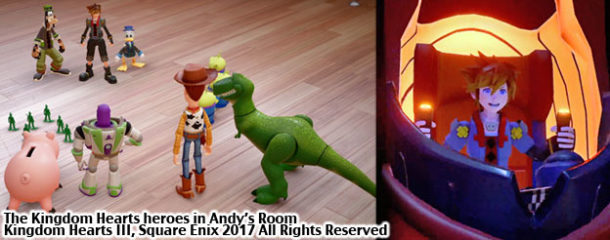
It was more than nostalgia that made the series work. Kingdom Hearts was a solid game in its own right. It earned a spot alongside the longest running franchises. The latest title in the series, Kingdom Hearts III, spent almost 10 years in development. Some of the themes and new ideas were teased as early as 2006. New footage was released at the Los Angeles E3 Expo in 2017 and even more footage was released at the D23 Expo a few months later. The big announcement that was revealed was an entirely new stage, based on the Toy Story universe. Sora, Goofy and Donald end up in Andy’s Room and are helped out by Woody, Buzz Lightyear and all the regular characters. They end up leaving the safety of the room and travel outdoors to a toy store. New game play elements are introduced, including being able to pilot a giant toy robot! The visuals in the game were so impressive they actually surpassed the graphics from the original Toy Story film.
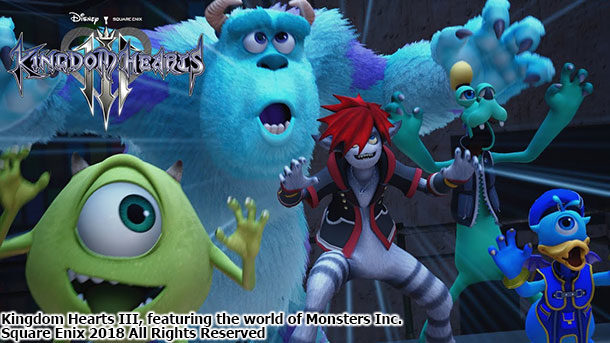
Kingdom Hearts III was scheduled to be released in 2018 but has been pushed back another year. Did you know that Disney Interactive actually launched two different franchise titles in 2002? Both were created by reputable Japanese studios but only Kingdom Hearts survived. What became of this other game and why did the series fail? We will explore this in our next entry. I hope to see you back for that! Please leave a question or comment below and I will try to get back to you.

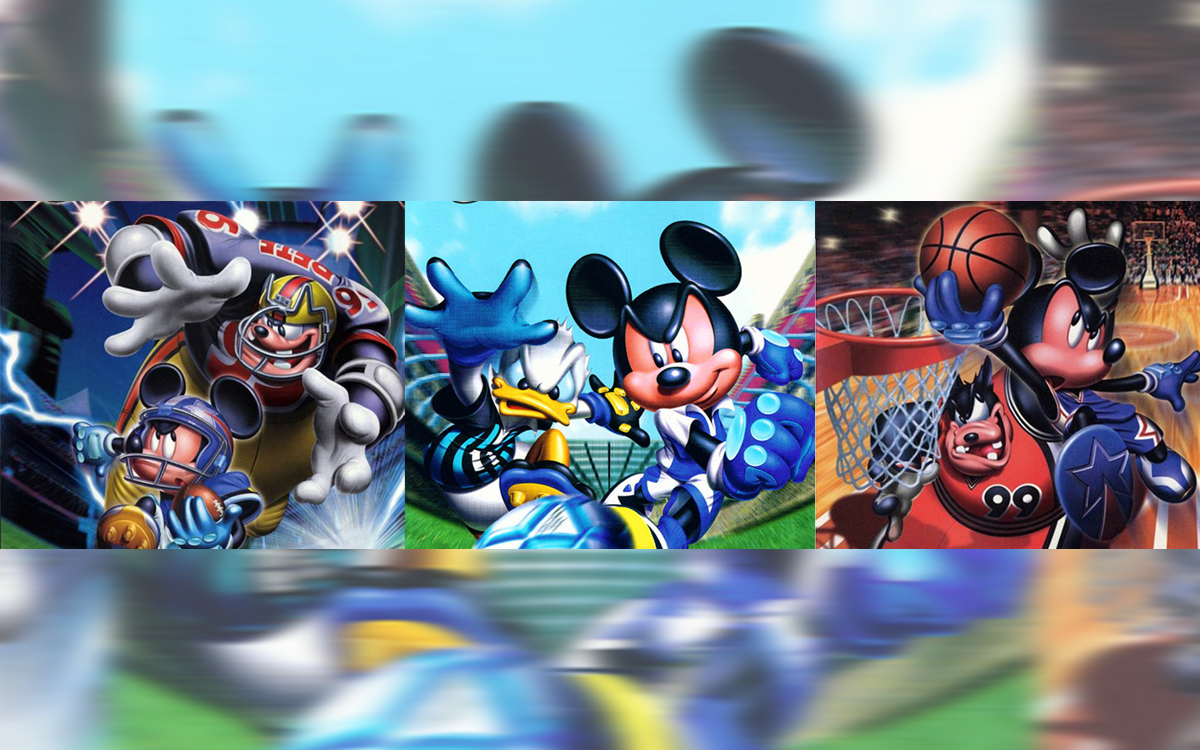
You must be logged in to post a comment.